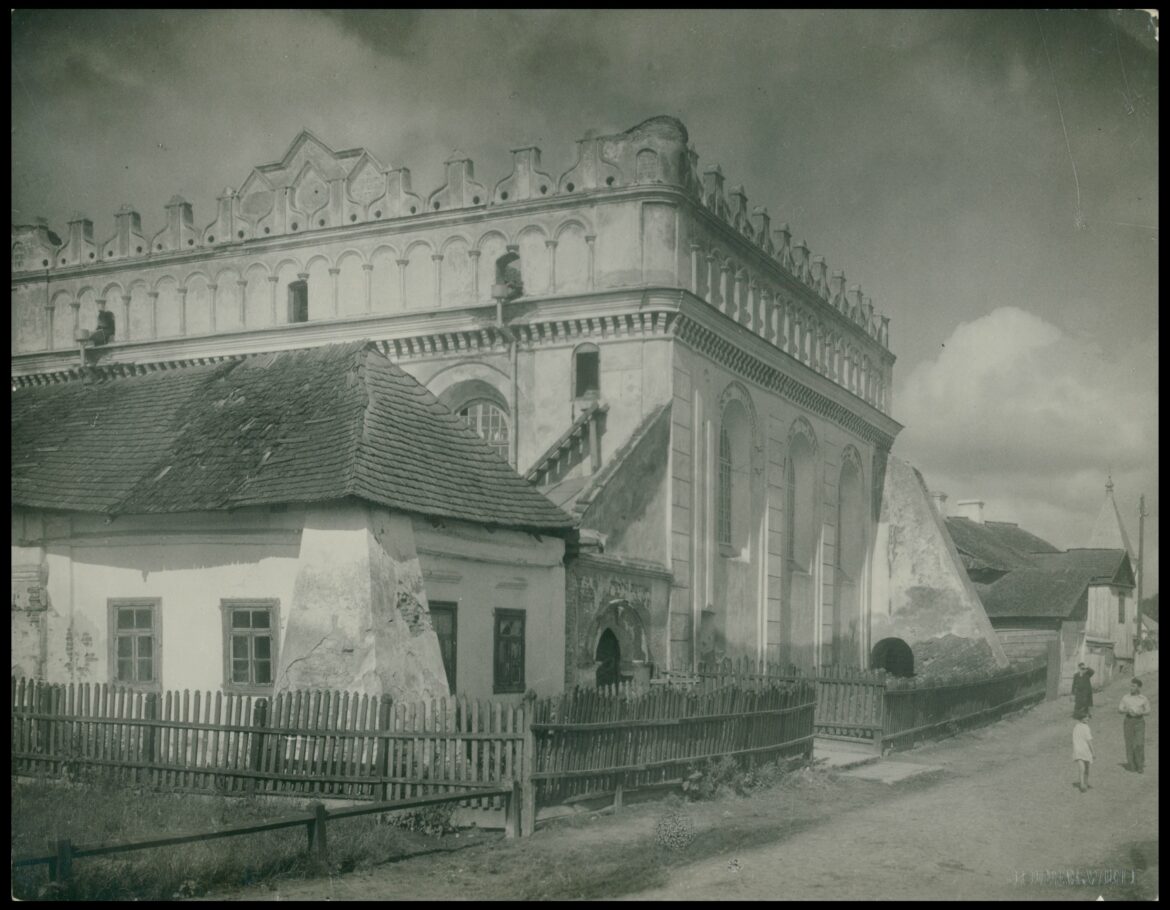In the Middle Ages, Polish Jews lived mainly in Wielkopolska and Małopolska regions. Due to the intense influx of immigrants from Germany in the 15th and 16th centuries, the Jewish communes were overpopulated, which aroused resistance from the kehillas against accepting new inhabitants. As a consequence, Jewish settlement moved to the eastern territories of the Polish-Lithuanian state, mainly to Red Ruthenia.
An attractive wild east
The presence of Jews in Ruthenia dates back to the Middle Ages. Taking advantage of the development of trade routes, they settled in the main urban centers until the Mongol invasions of 1238-1241, which destroyed these lands. The areas in the east aroused the interest of the settlers due to the poor population density, dictated by the frequent invasions and epidemics that led to the depopulation of cities. This resulted in a constant need for new settlers.
Until the end of the 15th century, Jews settled in Ruthenia primarily in royal cities and in private towns. The speciality of Jewish merchants was the trade on the Polish branch of the Levantine route, leading to the Genoese Black Sea colony – Kaffa. The richest Jews invested profits from trade often in the royal court, because such interests were guaranteed by the state, which gave the Jews a sense of security. For example, Szania from Bełz, Samson from Żydaczów, and Natko from Drohobycz became rich thanks to leases of salt mines, mainly in the Drohobycz salt mines, as well as customs duties and tolls. Most Jews, however, made their living by crafts, small trade, credi, and work for the fiscal apparatus. At the beginning of the 16th century, Jews lived in 30 royal and private towns in Ruthenia, which constituted about 30% of the then Jewish communities in all of Poland. The largest kehilla in the country was Lwow (today’s Lviv).
Like the Piasts did
The period of dynamic development of settlement in Ruthenia began in the 16th century. Many new towns were then established. In the process of their settlement, reminiscent of the urbanization of Polish lands during the Piast dynasty (13th and 14th centuries), the Jewish population played a significant role. At the turn of the 15th and 16th centuries, expelled Jews from Lithuania found shelter in the Ruthenian territories, and in the 20s and 30s years of the 16th century the first Jewish exiles from Bohemia, Hungary and Germany appeared.
Dynamic development and privileges for Jews
Kings and noble property owners in Ruthenia supported the influx of Jews because they were interested in increasing the income from trade and crafts. The nobility encouraged the Jews to settle on their land by issuing special privileges. It also used the services of Jews to locate new cities and attract Polish and Jewish colonists to them.
In the years 1501-1575, Jews settled in 59 cities. Until the mid-17th century, the process of urbanization was not interrupted by the economic crisis, which then hit its mark. In 1648, there were 254 towns in Ruthenia, and at the time of the Khmelnytsky Uprising, Jews lived in 163 of them, and the percentage of the Jewish population in the towns was 64.2%.
Cooperation with the magnates and nobility
From the 16th century, Jews settled in Ruthenia mainly in towns belonging to the nobility. For example, in the Halych district, out of 12 towns belonging to the Potocki family, 10 were inhabited by Jews. On the other hand, in the Kołomyja poviat, they lived in all 4 centers belonging to the Potocki family, who supported Jewish settlement and gave Jewish leaseholders, even entire starosties. In the Halych region, Jews lived in the Kalinowskis, Zamoyskis, Kazanowskis, Sieniawskis, Makowieckis, Stanińskis and Stanisławskis’ towns.
The Jewish population participated in the settlement of the Podlasie, Podolia and Volhynia, which were incorporated into Poland in 1569. After the Union of Lublin, the Volhynian princes began their planned colonization activities. King Stefan Bathory supported these processes by granting the land to middle and small nobility, merited during the wars. The expansion of the Polish nobility in today’s Ukraine began only after the ecclesiastical union of Brest (1596) and developed until the Khmelnytsky Uprising (1648).
The fate of the borderland diaspora
The new landowners incorporated the Ruthenian peasants into the feudal system, which is why the Jews began to be associated with “the instrument of great oppression”. As a result, the local population in the Ukrainian lands began to perceive Jews as enemies, being an intermediary between landowners and peasants. Moreover, it was noted that the Jewish population was largely privileged. They owned taverns, mills, fish ponds, orchards, and even some villages and towns, and they enjoyed their own self-government. Realizing the reluctance caused by their position, many Jews moved with weapons, and synagogues took the form of small fortified fortresses. However, the adopted protective measures did not prevent the murders of Jews during the Khmielnitsky’s Uprising (1648–1654), when the anger of the Cossacks turned against the Orthodox Jews. Despite these tragedies, the Jewish population experienced successive periods of rebirth. Even at the end of the Polish-Lithuanian Commonwealth, William Coxe, who wandered the Ukrainian lands, wrote: “If you ask for an interpreter, they will bring you a Jew, if you look at the inn, it is owned by a Jew, if you want a horse, a Jew will get them for you and a Jew will ride them, if you want to buy something – the Jew is your intermediary.”





